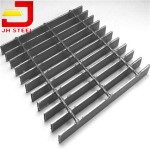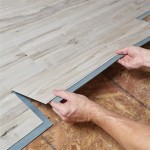What Is The Width Of A Roll Vinyl Flooring Plank?
Roll vinyl flooring, often referred to as sheet vinyl, is a popular flooring choice due to its affordability, durability, and ease of installation, particularly in areas prone to moisture, such as kitchens and bathrooms. One of the defining characteristics of roll vinyl is its availability in large, continuous sheets, minimizing seams and offering a visually cohesive surface. Understanding the standard and available widths of these rolls is crucial for planning installations and minimizing waste. The term "vinyl flooring plank" is typically associated with luxury vinyl plank (LVP) flooring, not roll vinyl. For the purpose of this document, the focus will remain on roll vinyl (sheet vinyl) and its width specifications.
When considering the "width" of roll vinyl flooring, we're essentially referring to the width of the roll as it is unrolled across a room during installation. This dimension dictates how many linear feet of the roll you need to cover the width of the space you intend to floor. Accurate measurements are essential for ordering the correct amount of material and avoiding unnecessary expenses.
The width of vinyl flooring rolls is not standardized in the strictest sense, but certain industry norms and common sizes prevail. These are generally dictated by manufacturing capabilities, shipping constraints, and the typical dimensions of residential and commercial spaces. This article will delve into the typical width options available, the factors influencing these dimensions, and how to choose the right width for a specific flooring project.
Common Widths of Roll Vinyl Flooring
The most frequently encountered widths for roll vinyl flooring are 6 feet (72 inches), 12 feet (144 inches) and occasionally 13.2 feet (158.4 inches). These widths are designed to accommodate the dimensions of most standard rooms, allowing for installations with minimal or no seams. The prevalence of these sizes means that retailers typically stock a wide variety of patterns and styles in these dimensions, offering consumers ample choices.
The 6-foot width is often preferred for smaller spaces, such as bathrooms, laundry rooms, or narrow hallways. Its manageable size makes it easier to handle and install, especially for DIY projects. In larger rooms, multiple runs of 6-foot vinyl may be needed, resulting in seams that must be carefully sealed and potentially less visually appealing.
The 12-foot width is the most common choice for larger rooms, such as living rooms, dining rooms, and master bedrooms. This width often allows installers to cover the entire room with a single sheet, eliminating seams altogether or at least minimizing them significantly. The reduced number of seams not only improves the aesthetic appeal of the flooring but also lessens the risk of moisture penetration and edge lifting over time.
The less common width of 13.2 feet can be useful in larger spaces. Depending on the room dimension, it can increase the change that you can cover it in a single sheet. However, it's worth noting that finding a wide selection of patterns and styles in this particular width may be more challenging, and it might require ordering directly from a manufacturer or a specialty flooring supplier.
It's important to remember that availability can vary depending on the manufacturer, distributor, and geographic location. Always check with your local flooring retailers or suppliers to confirm the specific width options available for the vinyl flooring pattern and style you're interested in.
Factors Influencing Roll Vinyl Width Decisions
Several factors impact the available width options when it comes to roll vinyl flooring. These factors are influenced by manufacturing processes, the materials used, and the market demands for different applications.
Manufacturing Capabilities: The machinery used to produce roll vinyl has inherent limitations in terms of the maximum width it can handle. While technological advancements continue to push these boundaries, there are still practical constraints on how wide a sheet of vinyl can be manufactured consistently and efficiently. Therefore, manufacturers often focus on producing widths that are cost-effective and meet the needs of a broad range of customers.
Material Properties: Vinyl composition and thickness also play a role. Thicker vinyl, or vinyl with specific backings, might be more difficult to produce in very wide sheets without compromising structural integrity. Additionally, some patterns or textures might be more challenging to apply uniformly across a large width. The need to maintain consistent quality and appearance can influence width limitations.
Shipping and Handling: The logistics of transporting and handling large rolls of vinyl flooring also factor into the equation. Very wide rolls can be cumbersome and difficult to maneuver, both in warehouses and on job sites. This can increase the risk of damage during shipping and installation, which can lead to higher costs and delays. The practical considerations of shipping and handling often encourage manufacturers to stick to more manageable width options.
Market Demand: Ultimately, the width options available are also driven by consumer demand. If there is strong demand for specific widths, manufacturers are more likely to produce them. The predominance of certain room sizes and the desire for seamless installations have contributed to the popularity of 12-foot widths, for instance. Market research and feedback from retailers and installers help manufacturers determine the most appropriate width offerings.
Choosing the Right Width for your Flooring Project
Selecting the appropriate width of roll vinyl flooring is a critical step in ensuring a successful installation and a visually appealing finished product. Careful consideration of the following factors will help you make an informed decision.
Room Dimensions: The primary factor in determining the ideal width is the dimensions of the room you are flooring. Accurately measure the length and width of the room, paying attention to any irregularities or obstructions. Consider the widest point of the room to ensure you have adequate coverage. If the room is less than 6 feet wide, a 6-foot roll will suffice, but if it exceeds 6 feet, you'll need to consider a 12-foot roll or multiple runs of narrower vinyl.
Seam Placement: Ideally, you want to minimize the number of seams in your vinyl flooring. Seams are potential weak points where moisture can penetrate, and they can also detract from the overall aesthetic. Choose a width that allows you to cover as much of the room as possible with a single sheet. If seams are unavoidable, plan their placement strategically. Try to position them in less conspicuous areas, such as along walls or under furniture. Proper seam sealing is crucial to prevent moisture damage and ensure a long-lasting installation.
Waste Minimization: When ordering your vinyl flooring, calculate the amount of material needed, taking into account the width of the roll and any potential waste. It's generally recommended to add extra material (typically 5-10%) to account for errors, cuts, and pattern matching. However, choosing the right width can help minimize overall waste. For example, if your room is slightly wider than 6 feet but significantly less than 12 feet, purchasing a 12-foot roll might result in a significant amount of leftover material. Weigh the cost of the extra material against the potential benefits of having fewer or no seams.
Installation Expertise: While roll vinyl flooring is often considered a DIY-friendly option, installing it properly, especially with wider rolls, can be challenging. Large sheets of vinyl are heavy and unwieldy, requiring careful handling and precise cutting. If you are not confident in your ability to install the flooring correctly, it's best to hire a professional installer. Professional installers have the experience and tools necessary to handle wider rolls of vinyl and ensure a seamless, long-lasting installation.
Budget Considerations: The cost of roll vinyl flooring can vary depending on the width, pattern, and quality of the material. Wider rolls may be slightly more expensive per square foot than narrower rolls. Consider your budget when making your width decision. If you are on a tight budget, you might opt for a narrower roll, even if it means having more seams. However, remember that the long-term cost of repairs or replacements due to seam failure can outweigh the initial savings.
By carefully considering these factors, you can select the appropriate width of roll vinyl flooring for your project, ensuring a successful and aesthetically pleasing installation that will last for years to come.

Lifeproof Red Rosewood Wood Residential Light Commercial Vinyl Sheet Flooring 10 Mil 12ft Wide X Cut To Length U9790537c832l14 The Home Depot

D C Fix Outdoor Floor Grey Oak 6 Ft Width X 12 Length 72 Sq Vinyl Roll Flooring Simple To Install Made For Exterior Use

Home Decorators Collection Palenque Park 12 Mil X 7 In W 48 L Waterproof Lock Luxury Vinyl Plank Flooring 23 8 Sq Ft Case

Armstrong Flexstep Good Armg2704401 Natural Vinyl Sheet 12 Width Warehouse 9 10

How Thick Is Vinyl Plank Flooring Whole Cabinet Supply

Flooring Thickness Guide What Is The Best Vinyl Lx Hausys

Shaw Cascades 12 Wide Vinyl Sheet

Iris Wood Plank Vinyl Lino Roll Flooring 2m 4m Width Kitchen Bathroom

Sheet Vinyl Vs Tile Flooring Comparison Guide Floorcon

Forbo Eternal Wood 13942 Classic Timber Sheet Vinyl 79 Width
Related Posts








